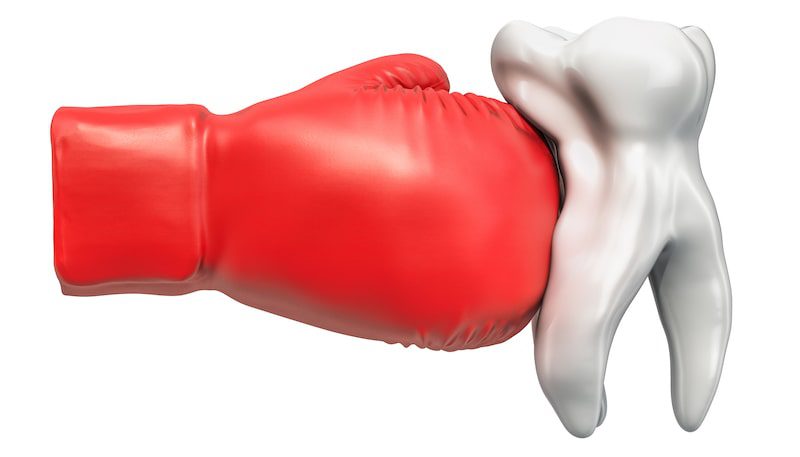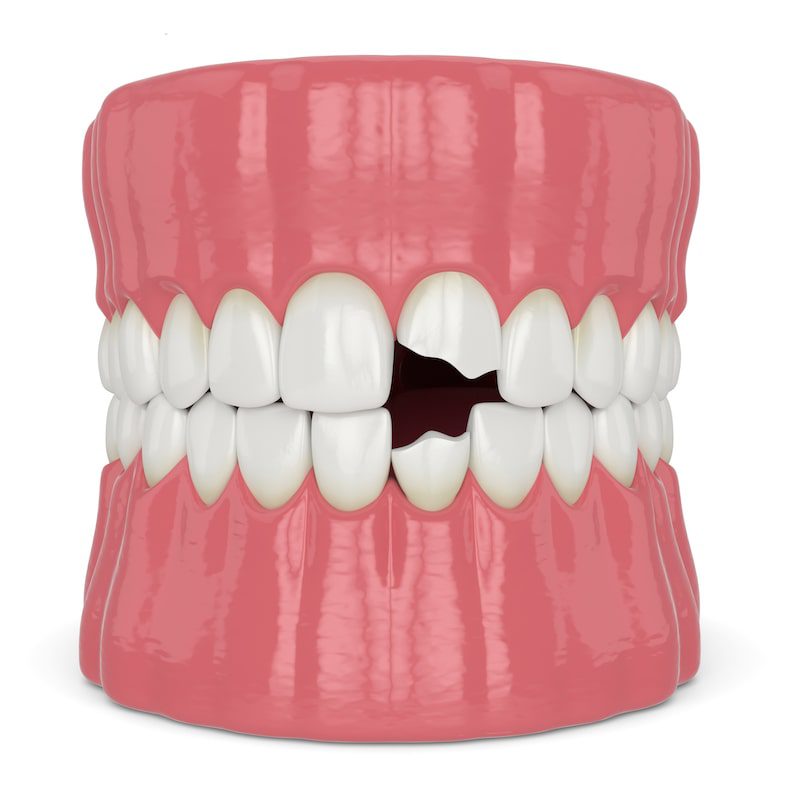If you experience a dental injury, the number one thing to do is seek professional help immediately.

If you have a dental emergency in the Beverly Hills area, call 310-273-0111 right away.
If a tooth has become dislodged to any degree and you cannot get to an emergency dentist, you should visit an emergency room.
However, there are some steps you should take to protect your teeth and gums from further harm.
1. What to Do for a Knocked-Out Tooth
If one or more teeth become partially or totally separated from the gum, call your dentist or an emergency dentist without delay.
If the tooth is completely knocked out, follow these directions:
- Carefully pick it up by the crown, being careful to avoid the root.
- If there is any dirt on the root, gently rinse it off in standing water until it’s clean, do not hold under a faucet.
- Adults should carefully attempt to ease the tooth back into its socket, making sure to position it correctly. Small children who may choke should not do this.
- Hold a tissue or cotton on top of the tooth to keep it in place, but do not push down.
- Alternatively, you can place the tooth in a small container of milk or slightly salted water until you get treatment.
For a completely dislodged tooth to be reimplanted, treatment must start within the hour, sometimes sooner. Your best bet is a dentist that offers emergency services and is willing to meet you at their office.
If this is not possible, go to the closest emergency room, or if you have a choice between multiple nearby hospitals, call each and ask about their dental services to determine which ER to go to.
For pain and swelling, hold a cold compress against the outside of the jaw to help, and unless contraindicated, take an over-the-counter pain reliever (if you need it).
2. What to Do if You Crack or Break a Tooth
 A cracked tooth must be treated promptly by a dentist and may require root canal therapy (RTC) if the crack has reached the pulp.
A cracked tooth must be treated promptly by a dentist and may require root canal therapy (RTC) if the crack has reached the pulp.
If left untreated, the crack(s) can progress and reach below the gumline to the extent that causes the tooth to die from lack of blood flow.
While some cracks don’t cause any discomfort, when they occur on the biting surface of the tooth, this can cause mild to severe pain when eating and drinking. If you bite on something that cracks or breaks your tooth, call the dentist quickly and make an emergency appointment.
In the meantime, there are some steps you can take, according to the American Dental Association (ADA), to help the dentist restore the tooth.
- Rinse your mouth out with warm water immediately,
- Apply pressure to stop any bleeding, and place a cold compress on the area to reduce swelling.
- Try to find any pieces of the broken tooth, wrap them in a wet cloth or gauze and bring it with you to your dental appointment.
For some minor breaks or cracks, the dentist may be able to bond the tooth back together or use veneers to conceal the crack.
In other cases, you may need a crown to replace the tooth.
In severe cases, the tooth may need to be extracted.
3. What to Do if You Lose or Break a Crown
If you lose or break a crown, inspect the area to determine whether you need to make an emergency dental appointment or not.
- If the crown has come loose, call your dentist immediately. You may be advised to place the crown back onto your modified tooth using a temporary over-the-counter denture adhesive.
- If you have the crown, and it is in good condition, keep it, as the dentist may be able to re-attach it. If the crown is lost, a replacement can be created.
- If you break or lose a crown, you should visit the dentist within one week to avoid the need for another impression to be made as the gum tissue under the missing crown may grow, making the initial impression unusable.
Make an emergency dental appointment if the following conditions are present.
- You are in significant pain
- The crown is partially attached but loose enough to pose a choking risk
- The tooth or crown has a jagged edge that may cause injury to your cheek or tongue
Otherwise, schedule your visit within one week.
Finding the Right Dentist
If you need a tooth restored after suffering an injury in or near Beverly Hills, call Dr. Kevin Sands at 310-273-0111. Your perfect smile is waiting!